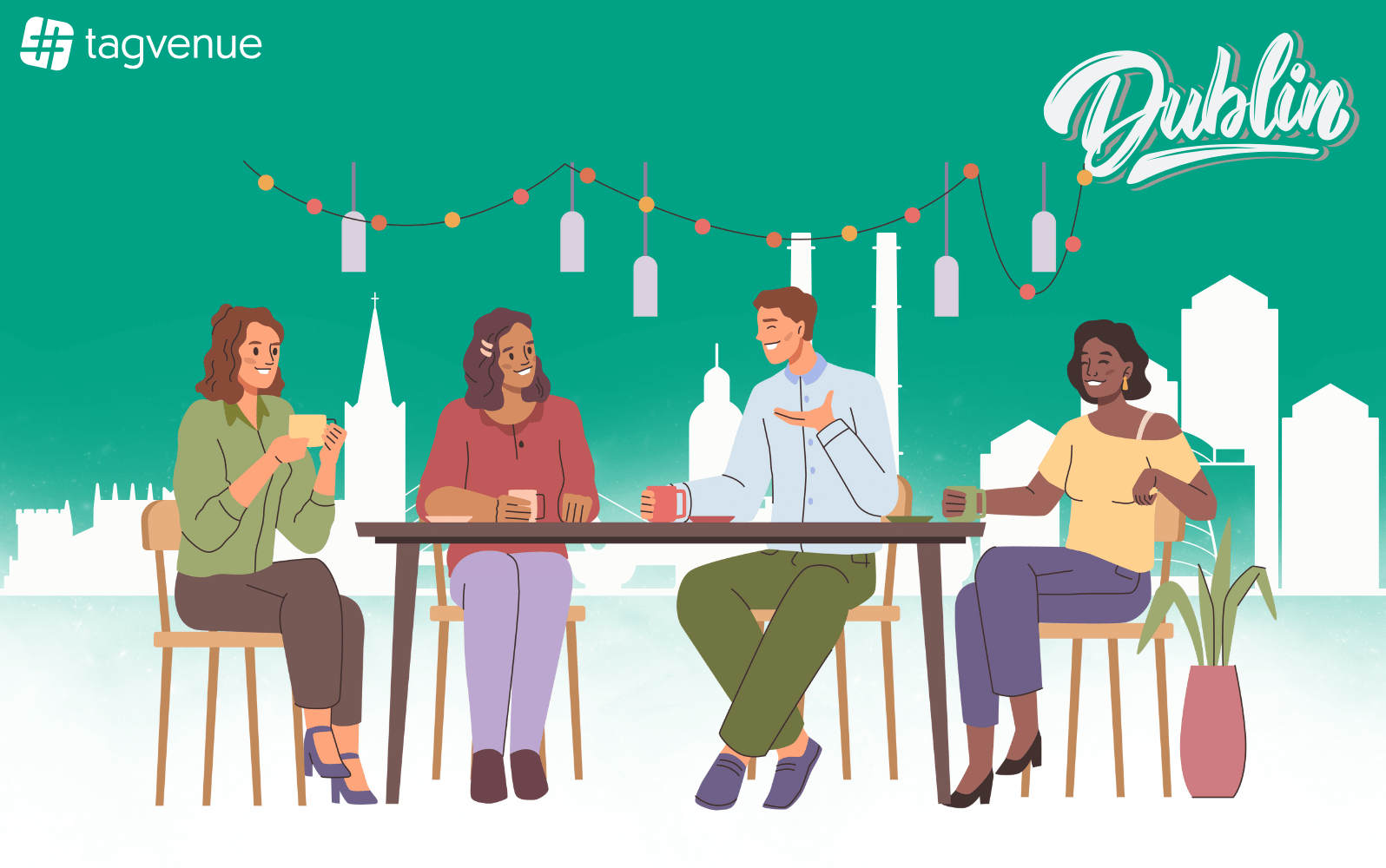Event Seating Arrangements: What’s The Best for Your Event?

So you’ve found the perfect venue for your special event. But how do you know which seating layout to choose? Whether you’re setting up a business meeting, hosting a charity gala or throwing an engagement party, the seating arrangement can make all the difference!
A smart seating style sets the tone for your event and helps guests feel comfortable, relaxed, and engaged. Check out our quick guide to the most popular seating arrangements, so you can make a confident choice the next time you’re planning something special!
The Most Popular Event Seating Arrangements
Banquet Style Seating
Round tables with 8 or 10 guests per table
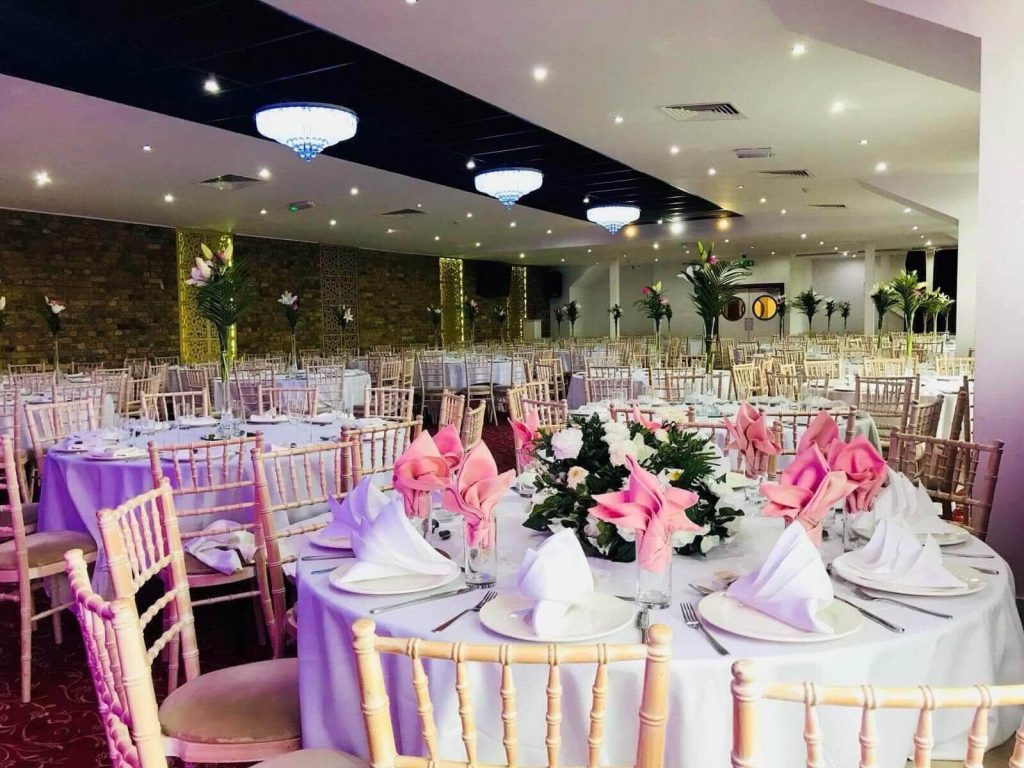
A classic seating style that encourages your guests to interact with each other. Seat important guests (VIPs, the wedded couple) in the middle of the room so they’ll be in the middle of the action. And remember to choose the centrepieces carefully. If they are too intrusive, they can block the flow of conversation at the table!
💎Perfect for: Wedding receptions, award nights, networking dinners, and other informal events
✅Pros: It’s a great seating arrangement for socialising, networking, and relaxing
➖Cons: It might be difficult for people seated at different tables to interact
Family Style Seating
One long table or several rows of longer tables
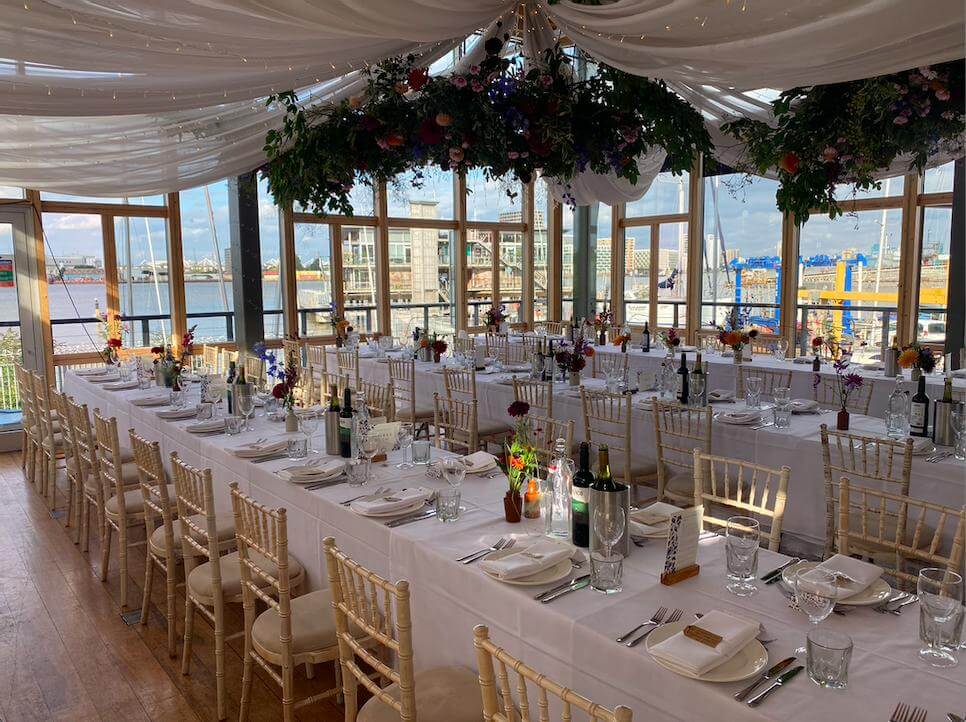
Long banquet-style tables look particularly striking if you’re working with ample space. This on-trend seating style makes for stunning photos. It also helps to create an intimate atmosphere, no matter how large your event is.
💎Perfect for: Wedding receptions, banquets and other informal events
✅Pros: It helps to create an intimate atmosphere no matter the event size and encourages guests to interact with each other.
➖Cons: It requires much more space than other seating arrangements.
Cabaret Style Seating
Round tables with guests seated on one side so everyone has a view of the presenter/s
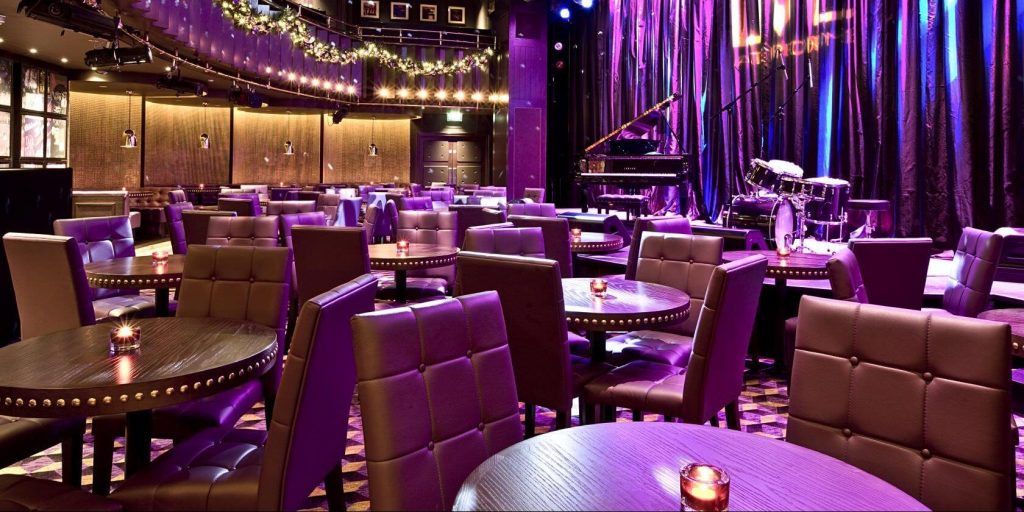
An ideal seating style for audience-type events or events combining presentations with group work. But keep in mind that the inefficient use of floor space with this arrangement means a reduction in seating capacity, so you need a large venue to pull this off.
💎Perfect for: Award nights, comedy nights, gala dinners and workshops
✅Pros: Guests can interact and stay focused on performances/presentations.
➖Cons: It might be difficult to maximise the space.
Auditorium / Theatre Style Seating
Rows of chairs lined up to face a stage, podium, projector, or other focal points
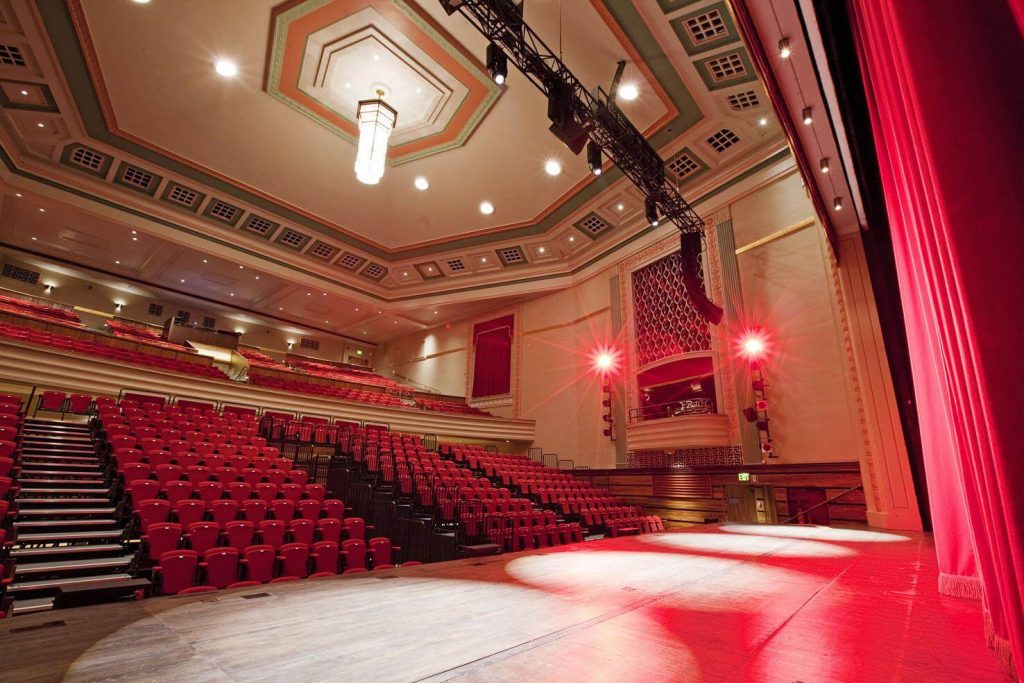
This configuration involves seats or rows of chairs that face a stage or a podium. It’s great for setting up decorations or backgrounds that will feature pictures and catch the audience’s attention.
💎Perfect for: Lectures, performances and product launches
✅Pros: It provides an ample solution for big crowds
➖Cons: It can be difficult for people sitting at the end rows to hear and see everything. It doesn’t encourage active participation.
Classroom Style Seating
Rectangular tables set up in the style of a classroom
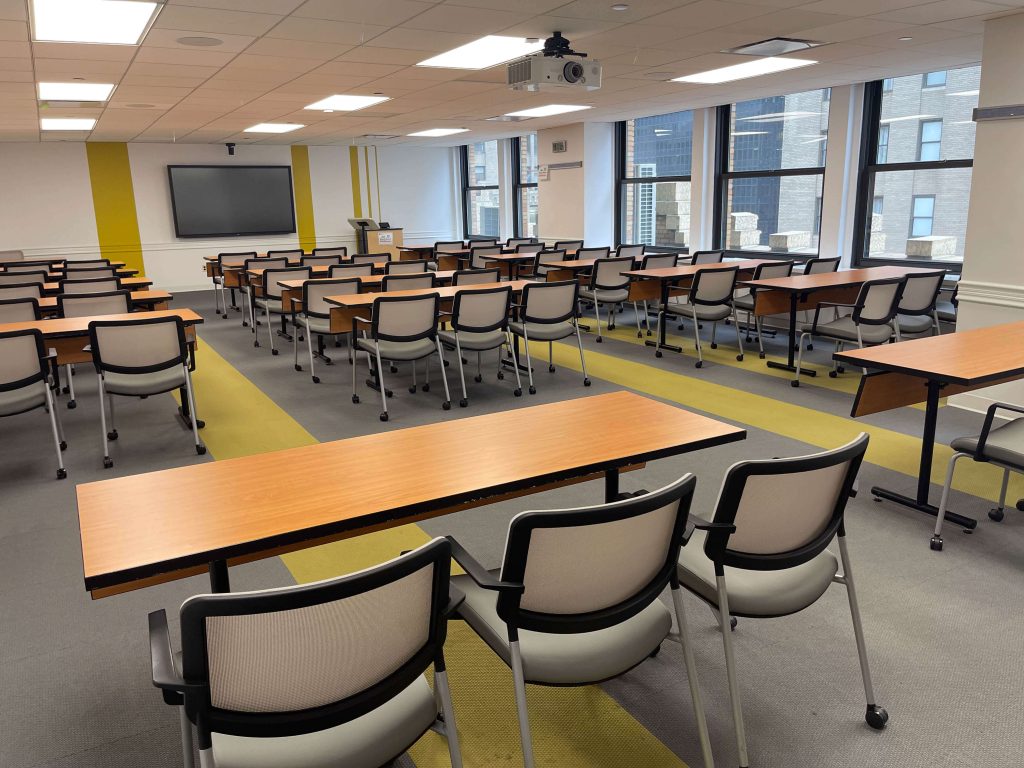
It’s a great option for events where participants need to take notes or use a laptop. However, attendees don’t face one another directly, so interaction between them is somewhat limited.
💎Perfect for: Lectures, meetings, seminars and training sessions
✅Pros: Encourages attention and is comfortable for taking notes.
➖Cons: If not properly planned, it may feel overwhelming. Doesn’t encourage interaction between attendees.
Conference / Boardroom Style Seating
A single or oval table for a maximum of 25 attendees
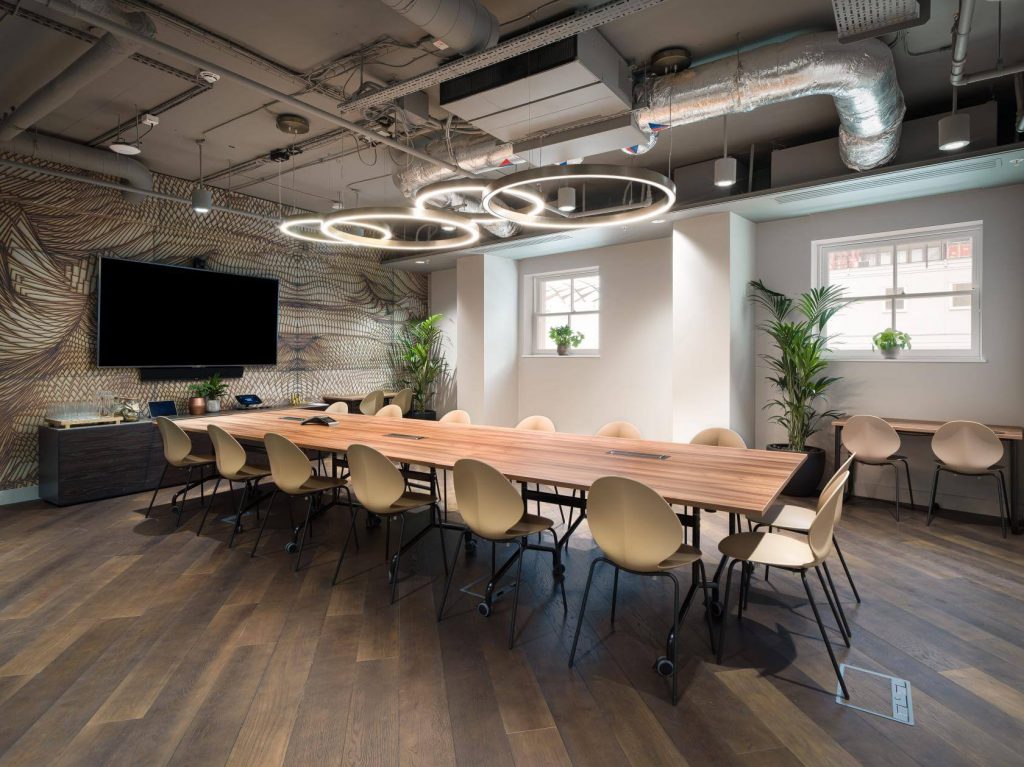
Boardroom or conference-style seating involves a single long, rectangular table where guests sit and face each other. The host or a VIP usually sits at the head of the table.
Conference seating is not typically used within weddings but Sian Belton, founder of Busy Brides loves this idea as it looks unique and works brilliantly in spacious venues.
💎Perfect for: Meetings where discussion and brainstorming are the priority, e.g. seminars
✅Pros: Encourages discussion and focus on one person
➖Cons: Uncomfortable for long and visual presentations
Planning a meeting with boardroom/conference-style seating? Check out our list of fantastic meeting rooms!
U-shape / Horse Shoe Style Seating
Rectangle tables set up in a U-shape
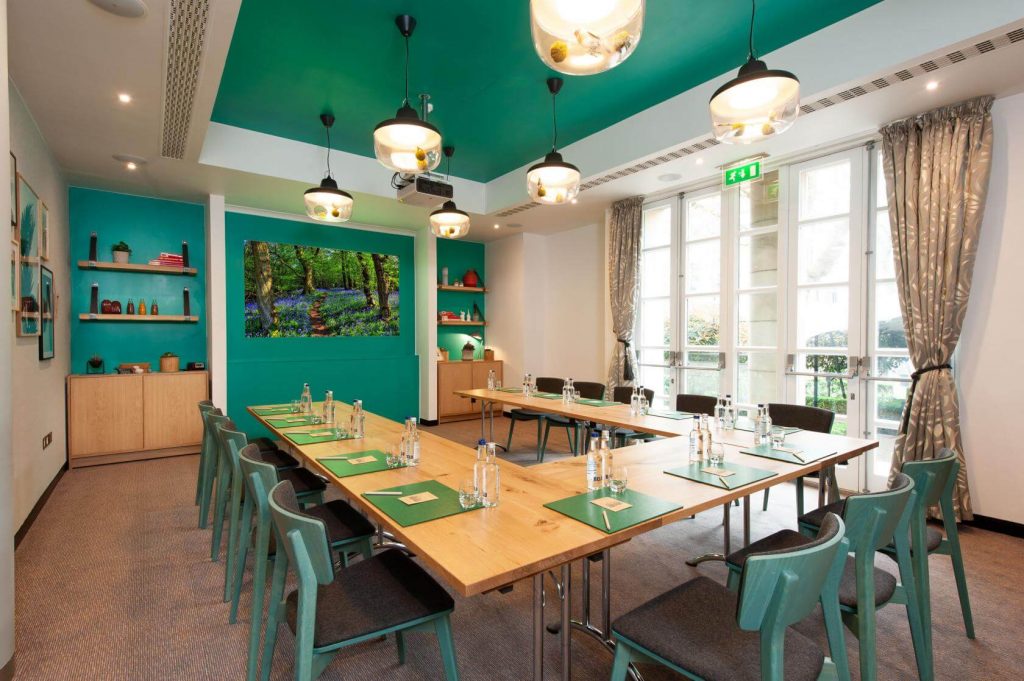
The practical U-shape configuration promotes interaction and allows for a focal point or presentation area. It is suitable for smaller groups (up to 30 attendees) where there’s a speaker in the centre or at the open end of the ‘U’. However, its inefficient use of floor space reduces seating capacity.
U-Shape is also a great layout for small weddings. The layout enables you to get closer to your guests whilst still having that feel for a top table.
💎Perfect for: Conferences, meetings, training sessions and workshops
✅Pros: Great for presentations and work collabs as everyone can see each other comfortably.
➖Cons: It only works for smaller groups of less than 30 participants.
Hollow Square Style Seating
Rectangular tables arranged in a square
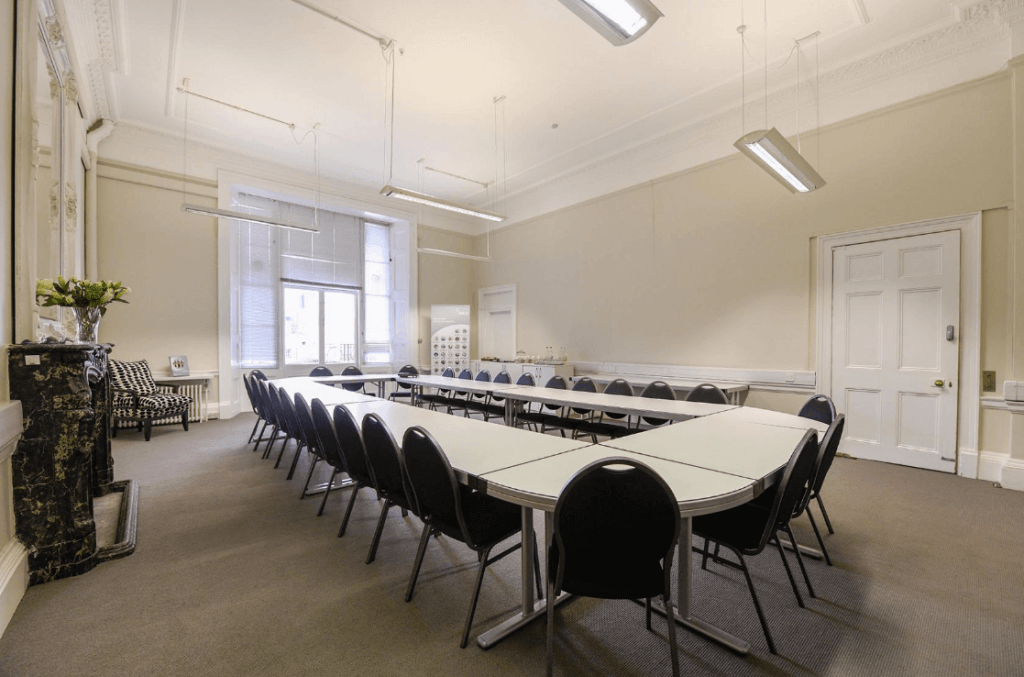
Suitable for smaller groups (up to 30 attendees) where there’s a speaker in the centre or at one end of the square.
💎Perfect for: Small meetings, training sessions and workshops
✅Pros: It’s comfortable for working and eating at the same time.
➖Cons: It’s difficult to maximise the space and it’s not ideal for presentations and shifting focus to one person at a time.
Cocktail Style
No chairs or tables – standing space only
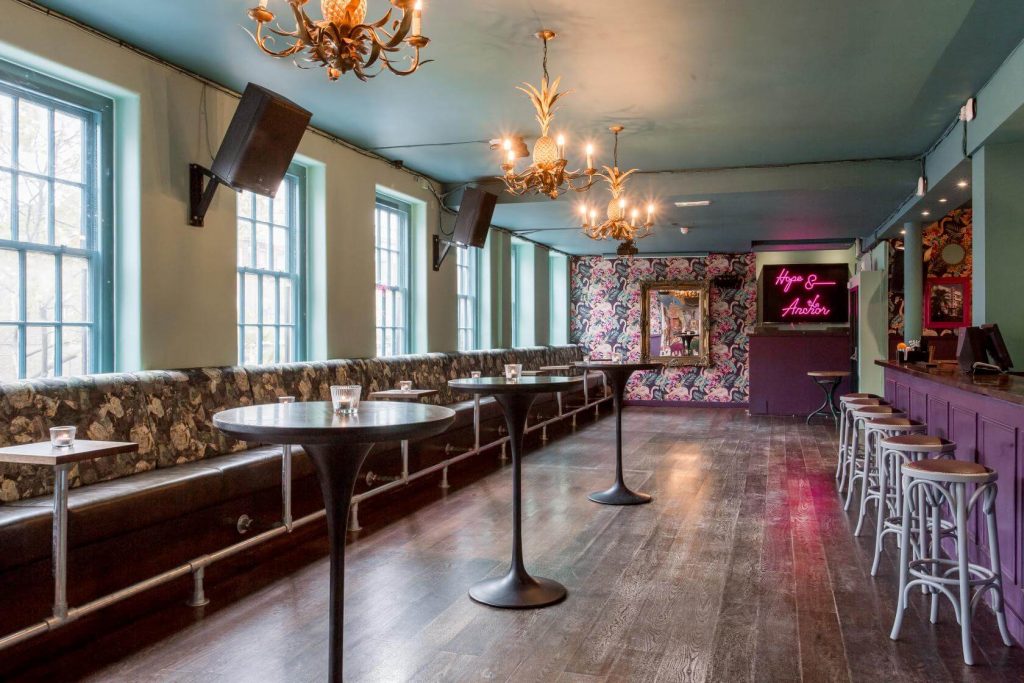
Cocktail style works perfectly for reception drinks or cocktail hour and for evening events. This style makes the most efficient use of floor space, leaving guests free to mingle as they please. Serve finger food and other small bites in lieu of a sit-down meal.
💎Perfect for: Cocktail parties, Christmas parties, business mixers and other social events
✅Pros: Great for socialising
➖Cons: Not great for serving full meals
Chevron Style
Rows placed at an angle to the speaker and separated by an aisle
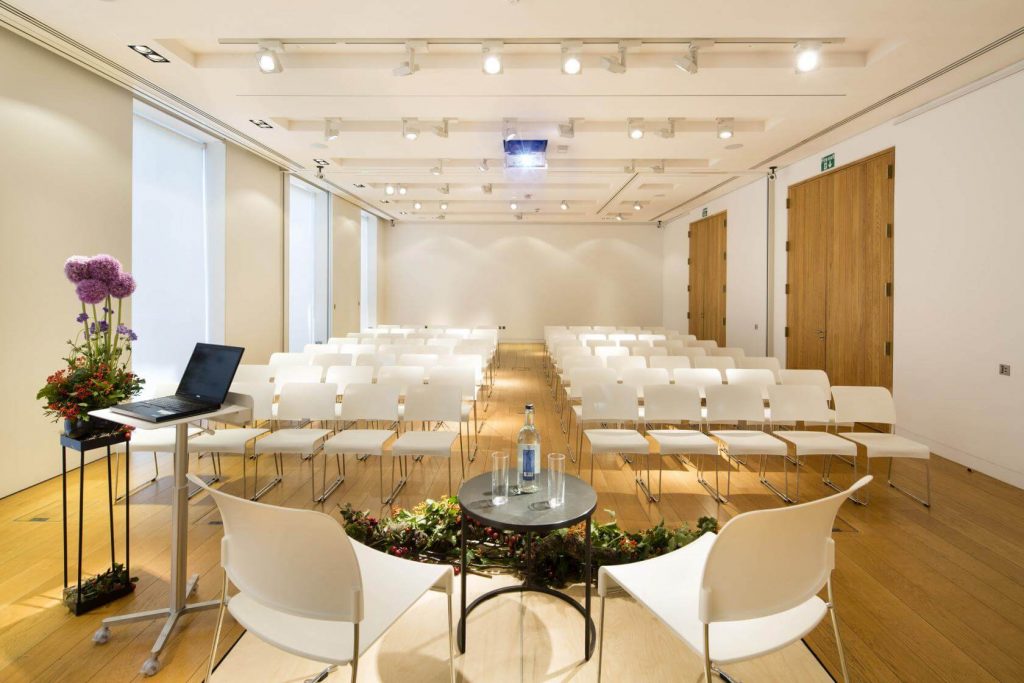
This style offers two columns of short and angled rows divided by an aisleway in the middle. Its main goal is to provide a focal point for the speaker so that everyone can see and hear them well.
💎Perfect for: Lectures, conferences, and presentations
✅Pros: Maximises space, so it’s great for presentations
➖Cons: Won’t work for bigger groups
Do you need assigned seating for your event?
Seating charts are recommended for guest lists of more than 50 people as they reduce confusion and potential conflicts among attendees. Most people actually prefer assigned seating as they feel more comfortable knowing they won’t have to search for a place to sit. For events where guests will be served a meal, seating charts allow catering staff to know who receives which meal, avoiding potential mix-ups.Remember to build your seating chart after your RSVPs are in, not before. And keep in mind that if guests are only going to be sitting for an hour or two, there’s no need to obsess over who sits where because they’ll have the chance to mingle before and after the seated activity.
Remember to build your seating chart after your RSVPs are in, not before. And keep in mind that if guests are only going to be sitting for an hour or two, there’s no need to obsess over who sits where because they’ll have the chance to mingle before and after the seated activity.
Summing It All Up
Choosing the right seating arrangement has a significant impact on the overall success of the event. That’s why it is important to always consider the nature and purpose of the event, the number of attendees, and the available space. These elements will help you determine the seating arrangement that will help you host a functional and enjoyable event for all attendees.
FAQ
How many types of seating arrangements are there?
Honestly, it’s difficult to provide an exact number of seating arrangements. There are countless ways to arrange seating as it mainly depends on the event type and available space. The seating arrangements provided in this article are the most popular ones, and we’re sure that you’ll choose the best one for your event among them! We recommend discussing your needs with the venue manager when looking for an event space. They are experts at their venue and can help you figure out which configuration works best for the space and your needs.
What is a traditional seating pattern?
A traditional seating pattern is one that has been commonly used over a long period of time. But what is considered traditional can depend on the guests’ culture, region, or type of event.
For example, in Western culture, a common traditional seating pattern for a wedding reception might be banquet-style seating, while in Eastern cultures, it might involve sitting on the floor or on mats.
Traditional seating patterns are usually based on cultural norms but also the number of guests, available space, and the nature of the event. That’s why the seating arrangement that is considered traditional for one occasion or event may differ from another.
How do you choose seating arrangements for an event?
When choosing the right seating arrangement, it’s best to consider several factors:
1. Type of event – The type of event you’re hosting will play a big role in determining the seating arrangement. For example, a formal business conference requires a different seating arrangement than a wedding reception.
2. Guest number – The number of guests you expect will help you determine the size and layout of the space you need for the seating arrangement. And this will guide you in picking the best seating option.
3. Venue – The venue you choose will impact the type of seating arrangement you can have. As some of them will not have enough space for a specific seating arrangement.
4. Purpose of the event – The purpose of the event will also affect the seating arrangement. If it’s a networking event, you may want to choose a cocktail style or banquet style that encourages the guests to mingle and engage in conversations.
5. Personal preference – The seating arrangement should also match your vision and goals for the event.
Once you have considered these factors, you can begin to explore different seating arrangement options. And trust us, it will be much easier to choose the perfect one with these elements in mind!
